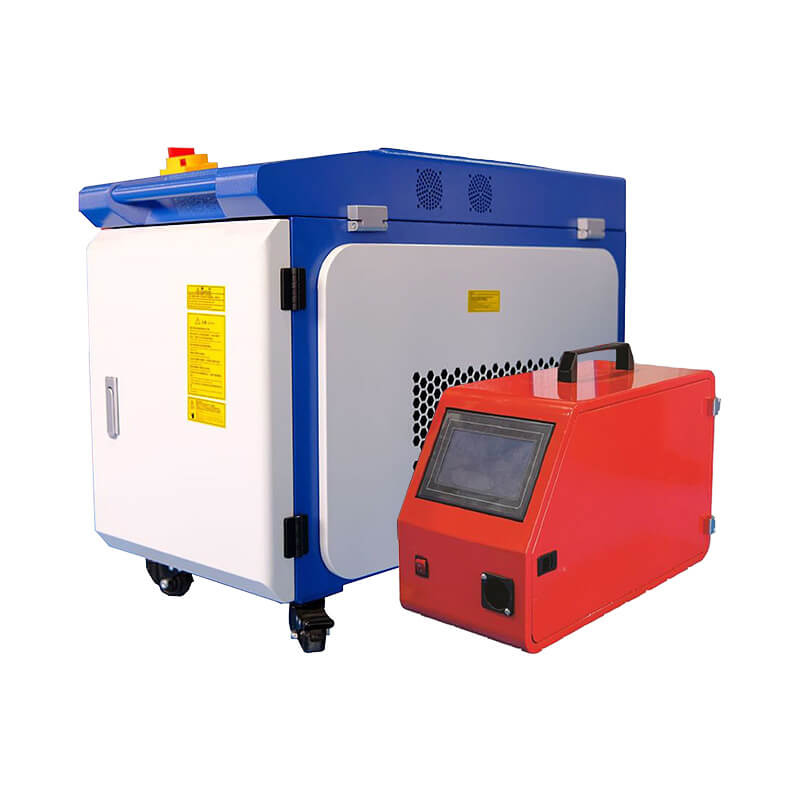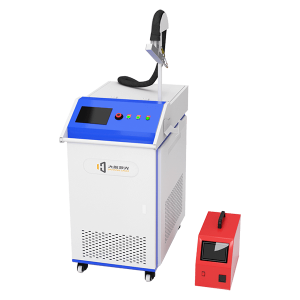Introduction to Handheld Laser Welding Machine: Its Features and Working Principle
What sets it apart is its high depth-to-width ratio, narrow weld seams, minimal heat-affected zone, reduced deformation, and swift welding speed. The resulting welds are not just flat and aesthetically pleasing; they also require minimal or no post-welding treatment. The weld quality is impeccable, devoid of pores, and can be precisely controlled with a small focused spot size and high positioning accuracy, thus facilitating easy automation.
Let's delve into the working principle of the handheld laser welding machine:
High-voltage drives the xenon lamp to emit light, which stimulates the YAG crystal installed nearby to produce laser light. This light undergoes resonance through a combination of full and half reflecting mirrors and is then transmitted through optical elements and shutters into a fiber optic cable. Finally, the laser beam is focused onto a pinpoint.
The power density on the focal plane can reach 10^5 - 10^13 w/cm2. The handheld laser welding machine utilizes the excellent directionality and high-power density of the laser beam. Through an optical system, the laser beam is concentrated into a tiny area, creating a localized high-energy heat source within a short period. This melts the material to form strong welds and joints.
Laser welding can be achieved using continuous or pulsed laser beams. The principle can be divided into heat conduction welding and laser penetration welding. When the power density is less than 10^4 - 10^5 W/cm2, it results in heat conduction welding with shallow penetration and slower welding speeds. However, with a power density exceeding 10^5 - 10^7 W/cm2, the metal surface heats up and forms a "keyhole," enabling deep penetration welding with faster welding speeds and a larger depth-to-width ratio.
I hope this information provides you with a comprehensive understanding of the handheld laser welding machine. If you have any questions or would like to discuss further, please feel free to contact us.



